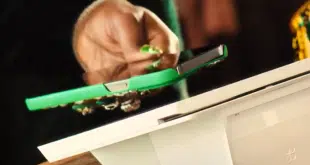(This is the second part of a two-part column. Part I appeared in the April issue.)
Last month, we went through the first three steps in a process that banks and fintechs have used to innovate. This month, we’ll complete our description of the process of facilitated group innovation.
It’s All In Your Mind. Sigmund Freud believed that dreams were the royal road to the subconscious. In group innovation, our subconscious can be a route to breakthrough ideas. The facilitator encourages the group to use their subconscious minds, knowing that it won’t yield a complete solution, but may point to a solution.
The facilitator might ask, “What color is the idea that your mind might be forming?” Let’s say a participant says, “It’s blue.” The facilitator then responds, “Blue. Maybe like the sea. How would the sea make payments?” The participant might say, “Maybe with shells?” There’s an idea to go on the wall: What if the system used tokens instead of currency?
Modeling the Innovations = More Innovation. Once people have put several ideas on the wall, groups can start modeling and testing the ideas using a method derived from object-oriented programing. The first step is to have people assign themselves roles in a one-to-one correlation with each of the “objects” in their proposed new, innovative process. Each thing in the system is an object: the customer, or a mobile phone, or a token, or a database, etc. The person taking the role of an object makes a sign for herself telling the rest of the group what object she is role-playing.
As one person reads out loud through the group’s wall chart of the idea, the role-players model the flow of the system by passing a token from object to object, with each narrating the action their object takes while verbalizing the data being sent to it. Then the next person states what object they’re role-playing and what data they have just received, narrates what action they take, and verbalizes the new data they send to the next object. Usually, the group discovers they need some additional objects and also find that some objects have no necessary role and can be dropped out.
The people who aren’t playing roles as objects monitor the process to point out when an object wouldn’t be able to perform its function. Maybe it needs data it doesn’t have. How might it get the data? Could something else substitute for the data? Is an additional object needed? Each time a fault is discovered and repaired, it is a good idea to start again at the beginning. This often reveals opportunities to simplify the design by eliminating unneeded objects.
After several rounds, the process should be able to be completed. But maybe it won’t accomplish what it was designed to do. How could the group fix it so the object model accomplishes the task? Often, the breakthrough innovation occurs only after the first several ideas fail when modeled. Once the model can make a full circuit through the process, it is time to evaluate the innovation.
Evaluating Innovations. Does the group feel that the innovation would resolve the problem? Is it efficient in how it does it? Would it have access to each of the kinds of data that are required? Could it likely be built for a cost that would, over time, be recovered? Would people pay to use it, and if so, use it enough to recover its operating cost and yield a profit? If “yes” to all, the group can redraw the final version of the innovation and go on to the next proposed solution.
Throughout the process, the facilitator’s role is not coming up with an innovation. Her role is to make the process work successfully for the group, using a combination of graphic and other facilitation skills.
Using this framework, other techniques are often deployed to seed the original insights such as analogs of the problem in other industries or analogs in nature. The new seed ideas are then worked back to their origins, graphed, modeled, and tested.
Conference Review
The Bank Innovation 2018 conference March 5-6 in San Francisco highlighted several truly new banking innovations via a series of quick-paced, competitive demos. The winner, Baton, is a multicurrency, international account-to-account processing system that connects multiple banks’ payments systems via a proprietary permissioned ledger.
—George Warfel • GWarfel@haddonhillgroup.com





